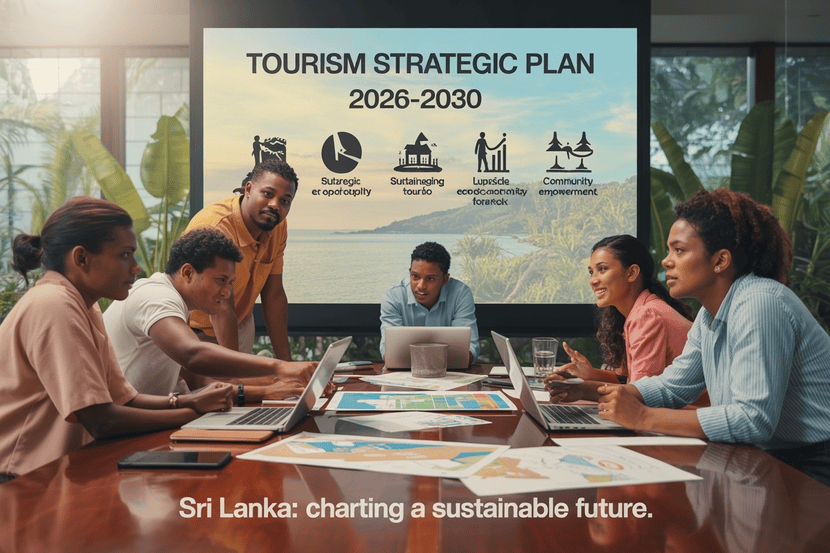≡-US Faces Steep Decline in Global Tourism as Travelers Reject the Country Amid Heightened Tensions – Viral of Today
<> Viral of Today <>
Home » America Travel News » US Faces Steep Decline in Global Tourism as Travelers Reject the Country Amid Heightened Tensions Published on
September 4, 2025Travelers are rejecting the US at an increasing rate which is resulting in global tourism suffering a steep decline in the country. Political tensions and policies surrounding the US have been deemed controversial. Disagreements and policies made by the US government have made a nerve-racking situation for visitors coming from other places, especially Canada. With this in mind, a certain number of tourists are bypassing the US in favor of destinations which are deemed more secure and friendly. In light of current global conditions, this is the impact of sentiment challenges on the US tourism industry. There is a massive decline in visitors which in turn decreases the country’s spending and economic welfare.The year US is set to experience 2025 is going to be characterized by a continuation of both sightseers from Canada and other countries visiting the US, an unsustainable trend that is projected to last considerably longer than what is anticipated. A considerable portion of the blame for this situation continues to rest on the policies and the spoken divisiveness of the last US Government, the Trump Government, and the consequences that this has had on the ability and willingness of foreigners to travel to and spend money on the US, and the investment made on hotel stays, is of considerable magnitude.Decline in Canadian VisitationCanada has been a traditional source of tourists to the U.S., with millions of Canadians traveling south every year. However, recent data from Tourism Economics paints a bleak picture for U.S. tourism in 2025. Canada’s year-to-date visits to the US have sharply fallen by 25.2 percent. The situation is particularly dire for arrivals by car, which saw a staggering 37 percent year-over-year decline in July alone. This sharp drop highlights how the negative sentiment surrounding U.S. policies is directly influencing travel decisions.Canadian tourist spending has also been significantly impacted by these policies. The once steady stream of Canadian tourists is now seeking alternative destinations, with many opting for travel to countries that do not carry the same level of political tension. As a consequence, states along the northern border, such as Maine, which depend significantly on Canadian visitors, are seeing a considerable drop in hotel occupancy levels. For 2025, Maine’s year-to-date occupancy rate has fallen to 53.9 percent, compared to 57.2 percent in 2024, highlighting the ongoing challenges facing U.S. tourism in these areas.Overseas Arrivals Experience DeclineWhile Canadian visitation has experienced a particularly sharp drop, overseas arrivals are also struggling to recover. Tourism Economics reports a 1.6 percent year-to-date drop in international visits to the United States, with July alone seeing a 3.1 percent decrease in arrivals from overseas. This downturn is primarily driven by declines in visitors from Western Europe and Asia, two key markets for U.S. tourism.Experts suggest that this decline in international arrivals reflects a broader trend: the global appeal of the U.S. is waning. Many foreign tourists are deterred by the perceived political instability and controversial policies of the current U.S. administration. As a result, they are choosing to visit other destinations where political and cultural climates are more favorable.The Impact of U.S. Policies on International Travel SentimentThe Trump administration’s rhetoric and policy decisions have had a lasting effect on how the United States is perceived abroad. The severe sentiment drag mentioned in the latest Tourism Economics report underscores this phenomenon. The report states that the United States is suffering from a significant loss of goodwill among international tourists, which is translating into fewer visits and lower spending.This loss of global appeal has led to a stark contrast between predictions made earlier in the year and the actual performance of U.S. tourism. Back in December of the prior year, analysts had forecasted a 9 percent increase in international arrivals to the U.S. by 2025. However, the country is now facing an 8.2 percent drop in overseas arrivals by year’s end. This significant decline has resulted in U.S. tourism remaining far below pre-pandemic levels, further intensifying the sector’s persistent challenges.The reduction in international visitor spending is equally alarming, with recent projections indicating a 4.2 percent decrease, equating to a staggering loss of $8.3 billion for the tourism sector. This is a significant blow to an industry that relies on foreign tourists for economic stability, particularly in popular tourist destinations and urban centers.Air Travel Bookings and Airline Revenue ImpactOne of the most telling signs of the decline in U.S. tourism is the significant reduction in international air bookings. Between August and October, international inbound flight bookings are running 10 to 14 percent lower compared to the same period last year. This trend is particularly pronounced for air bookings from Canada to the U.S., which have seen a dramatic decrease of 35.6 percent to 43 percent compared to the same period in 2024.This drop in air travel bookings is particularly damaging to U.S. airports and airlines, which depend on international traffic to maintain revenue. Airlines are reporting slower growth in international routes and facing challenges in filling seats on flights to and from the U.S. This is further compounded by the broader economic effects of decreased visitation, with fewer travelers opting to stay in U.S. hotels or dine in American restaurants.The Rise of Mexico as an Alternative DestinationIn stark contrast to the decline in U.S. visitation, there has been a notable increase in Canadian interest in Mexico. From August to October, bookings from Canada to Mexico are up by 11.8 percent to 13.5 percent, as travelers seek alternative destinations in response to the political climate in the United States. Mexico, with its proximity and relatively favorable exchange rates, has emerged as a top choice for Canadians looking to travel abroad.For the U.S., this shift in travel patterns presents a clear challenge. As Canadian tourists flock to Mexico, they are not only spending their tourism dollars elsewhere but also bypassing the United States as a destination of choice. The increased interest in Mexico further underscores the challenges faced by the U.S. tourism industry as it works to recover from the negative effects of political and social instability.The Bright Spot: Mexican Visitors to the U.S.Despite the negative trends, there is one area of positive growth for U.S. tourism: Mexican visitors. Tourism Economics reports that arrivals from Mexico have increased by 13.9 percent YTD through May, surpassing expectations. This growth has helped offset some of the declines from other international markets, particularly from Canada and Western Europe.The uptick in Mexican visitors is a testament to the strong ties between the U.S. and Mexico, both geographically and economically. Many Mexicans continue to view the U.S. as a desirable destination for leisure, shopping, and family visits, and this trend is expected to continue in the near term. However, it is clear that this growth alone will not be sufficient to counterbalance the broader decline in international arrivals.Domestic Tourism Boost?Another potentially positive outcome of the current travel situation is a boost in domestic tourism. As fewer Americans are choosing to travel abroad, there may be an increase in domestic travel. Many U.S. citizens are opting to explore their own country, contributing to growth in local tourism industries. This shift could provide a much-needed cushion for businesses that have been struggling to maintain revenue from international visitors.Additionally, the weakened U.S. dollar has made the United States a more affordable destination for both international and domestic tourists. While the exchange rate has made U.S. travel more enticing for some, it remains uncertain whether this financial incentive will be enough to overcome the broader sentiment issues that continue to plague U.S. tourism.The Ongoing Struggles of U.S. TourismAs the years progress, the U.S. tourism industry’s most crucial international relationships have regressed drastically as international visitation from Canada, as well as other countries, collapses. The downturn in overseas travel and the incredibly sharp drop in Canadian visitors is evidence of the United States losing its luster in the global tourism landscape.With some bright spots, like growing travel from Mexico and an anticipated uptick in properties willing to promote domestic tourism, the U.S. tourism Industry still is not expected to reach its full capacity. The highly polarized policies, the divisive policies, and, of course, global uncertainties stub US tourism business growth.US tourism is in decline as travelers continue to shun the United States due to volatile political environment and polarizing policies. The current administration’s tone and actions have fostered an uninviting situation, causing international tourists, especially from Canada and other regions, to go to destinations that offer peace and a better context. This trend will continue to impact the United States tourism industry adversely.US tourism businesses and destinations are experiencing significant financial strain and must reevaluate their strategies to address the widespread negative perception that has developed internationally. They need to, in particular, reverse the loss of international trust and the negative sentiment the US has been treated with globally. Failure to rethink the sociopolitical factors causing the United States to be perceived in such negative light guarantees that the US tourism business will continue to have a hard time in years to come.
This information will surprise you!
See also
- Read until the end to discover everything.
- Important information you need to know.
- Interesting facts and helpful tips.
Conclusion
Did you enjoy the news? Keep following us daily!













